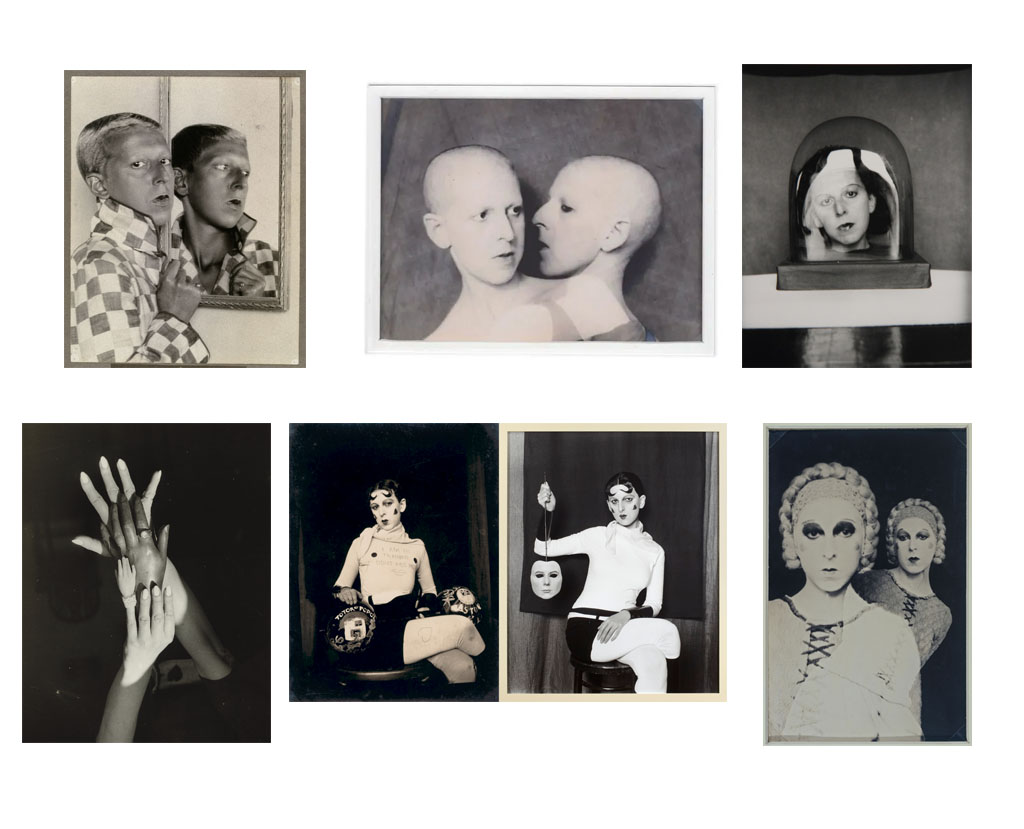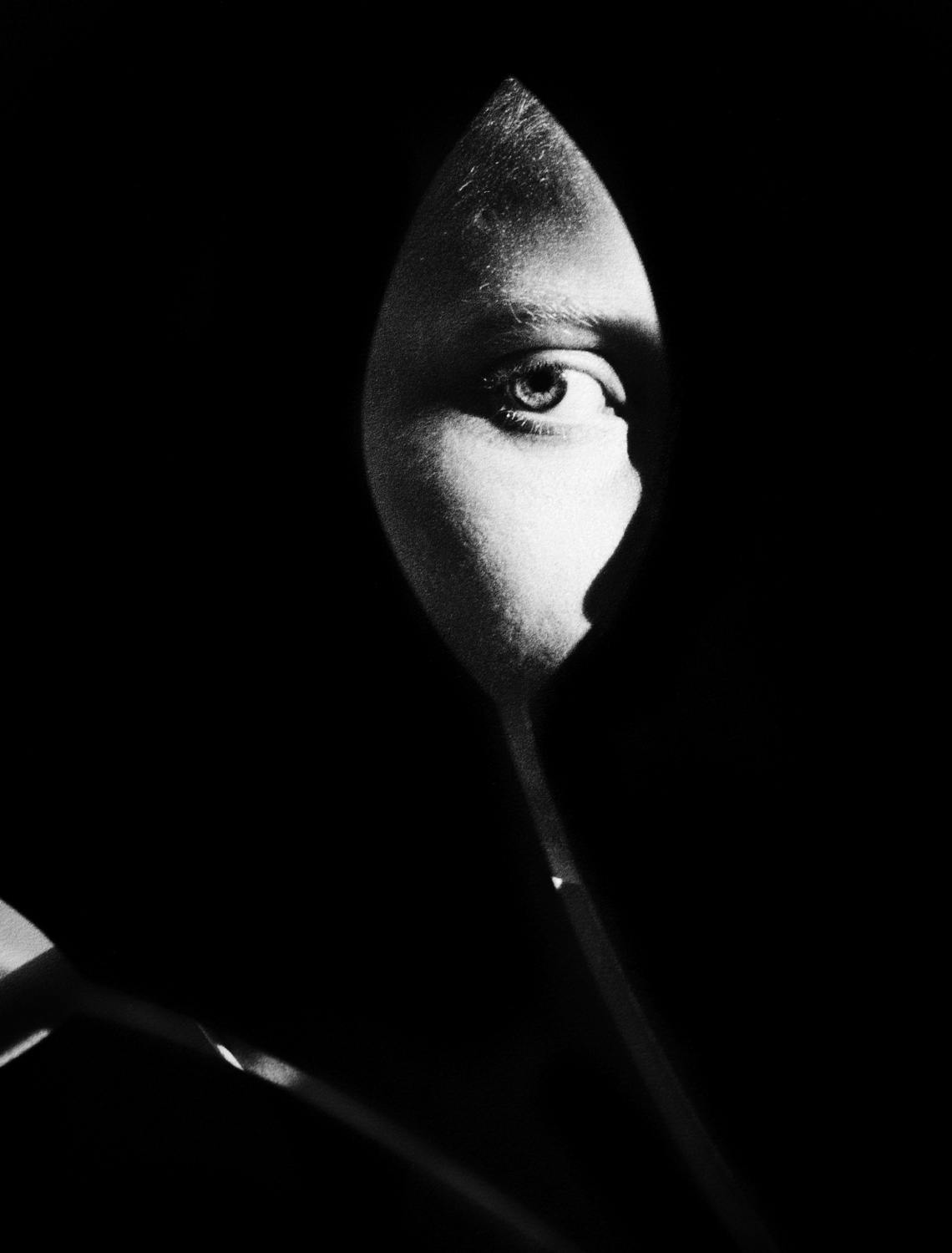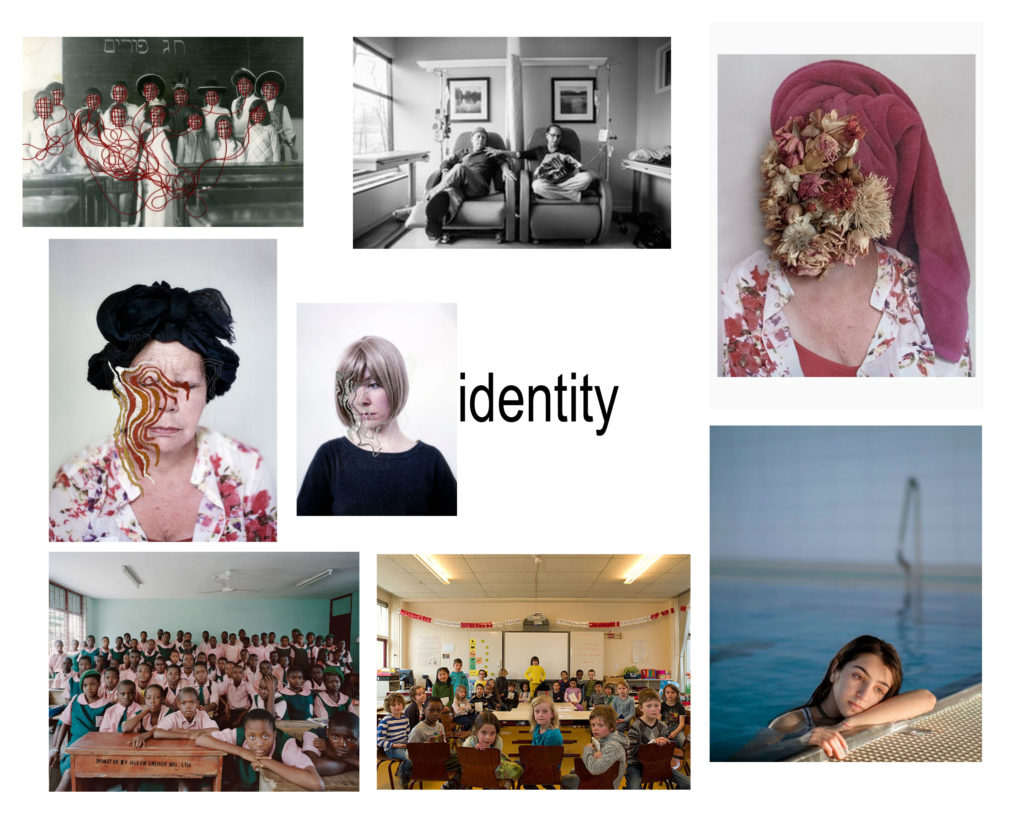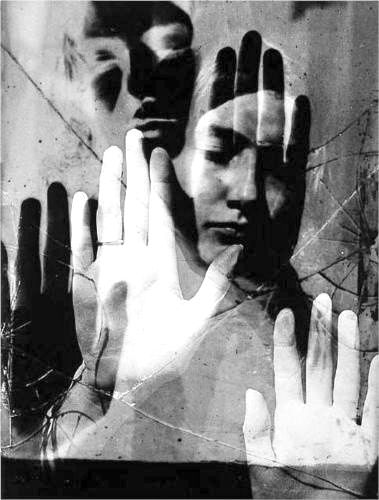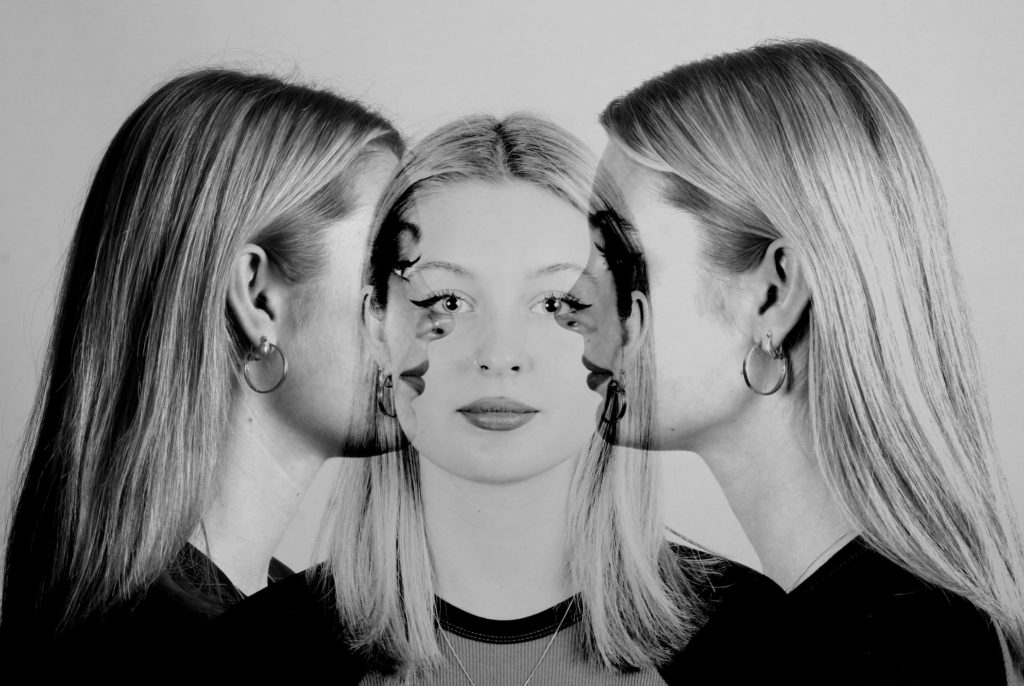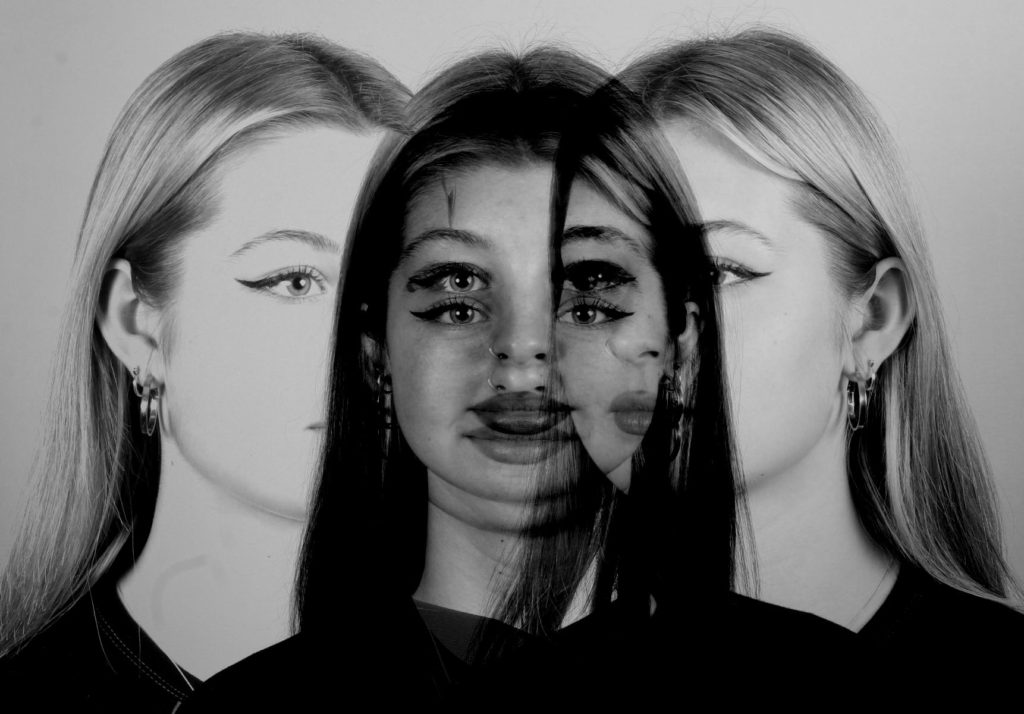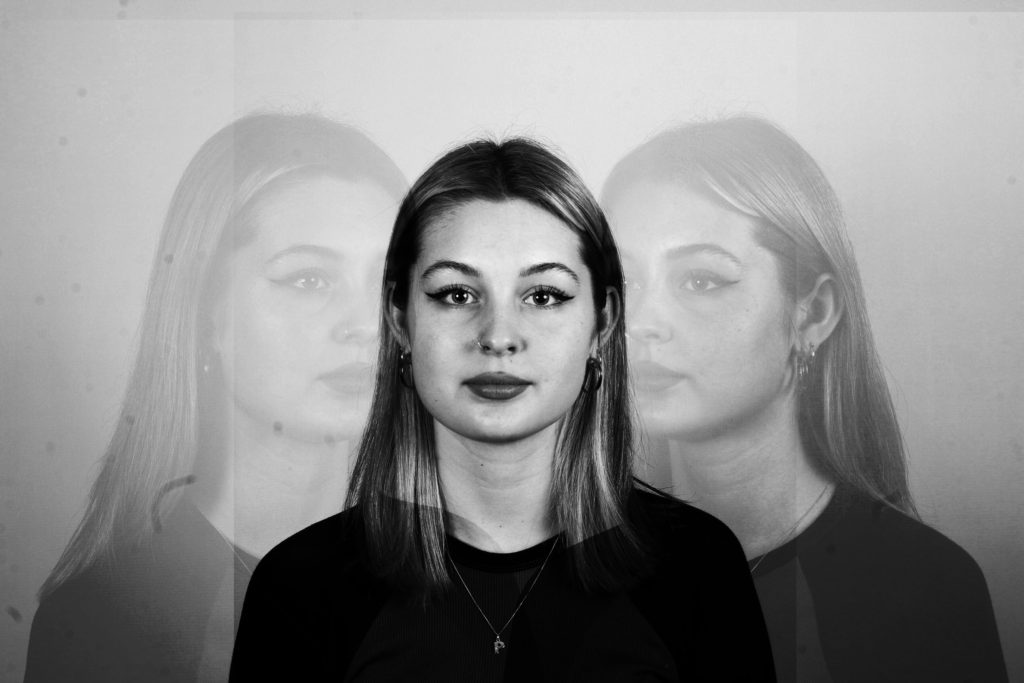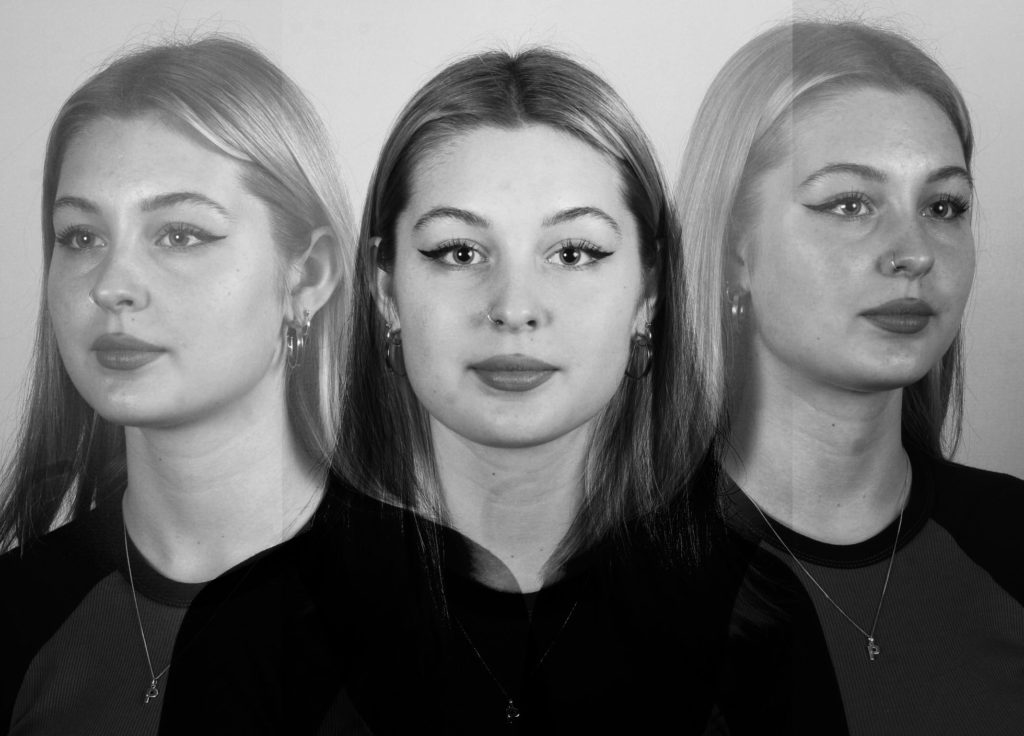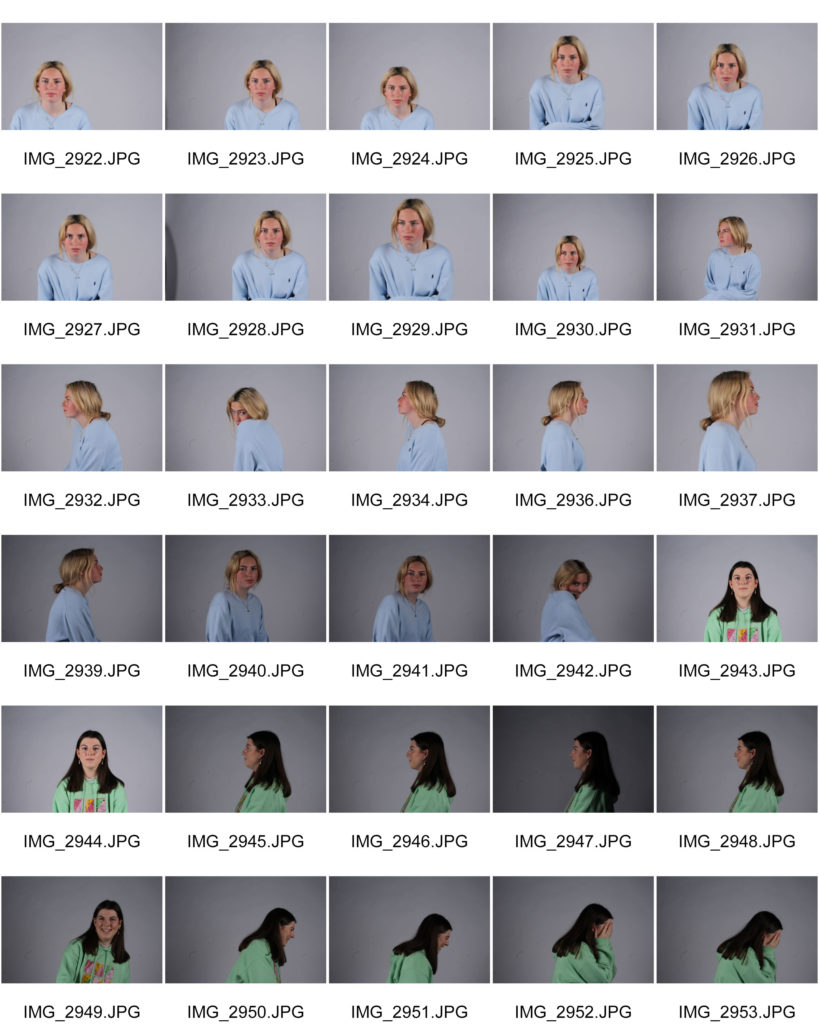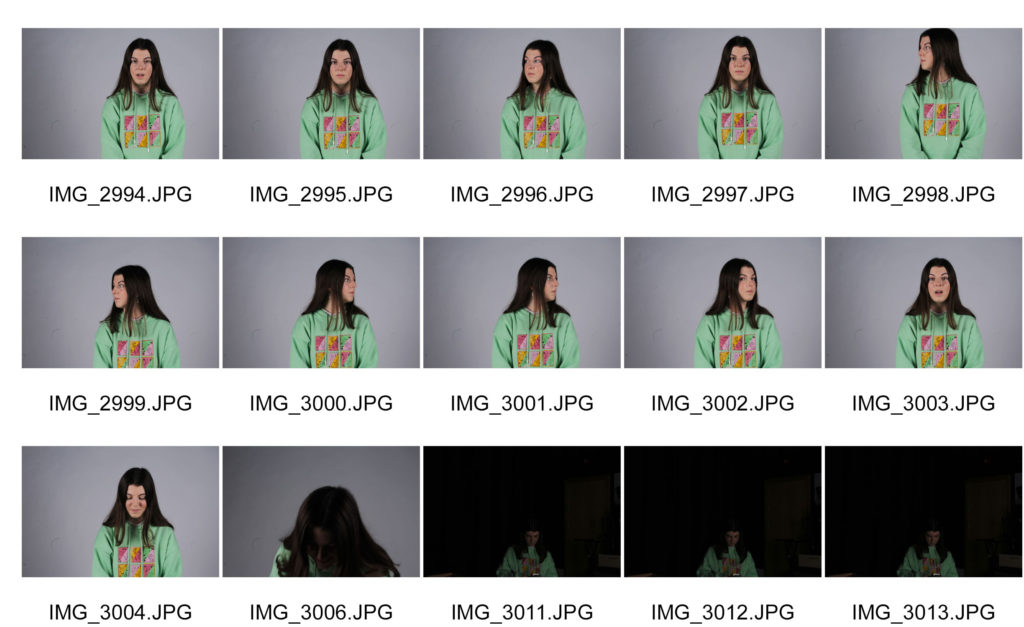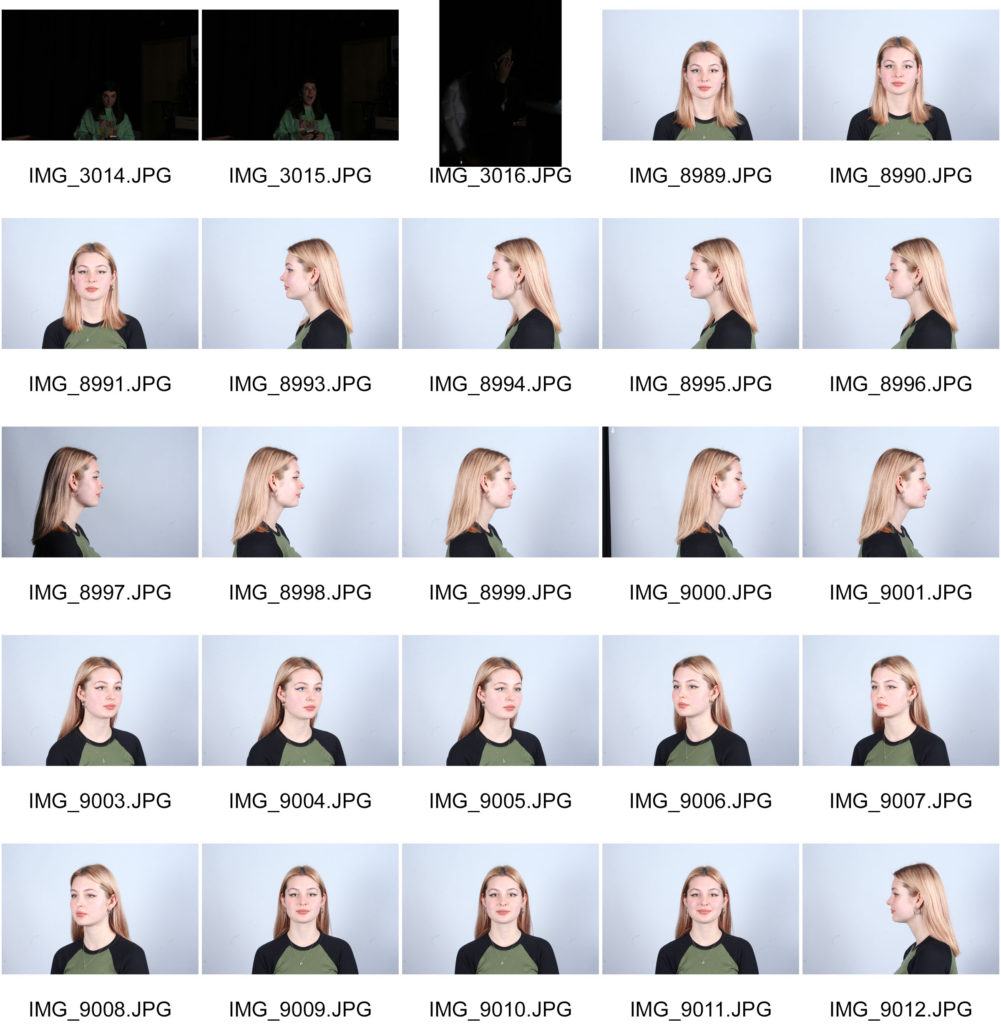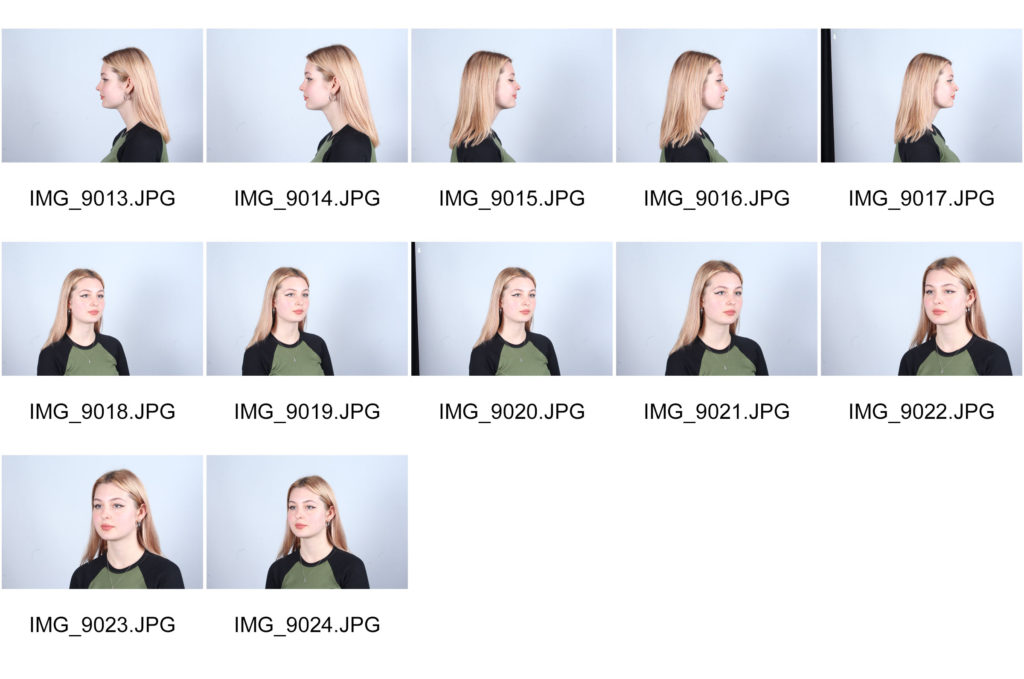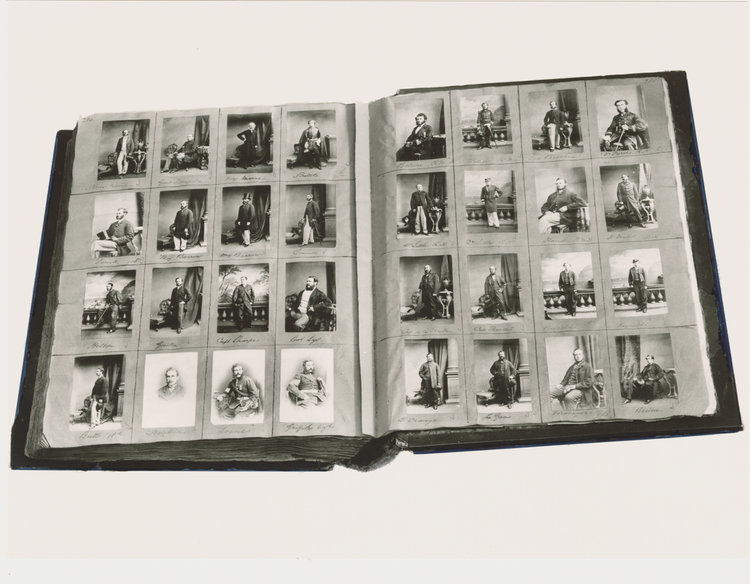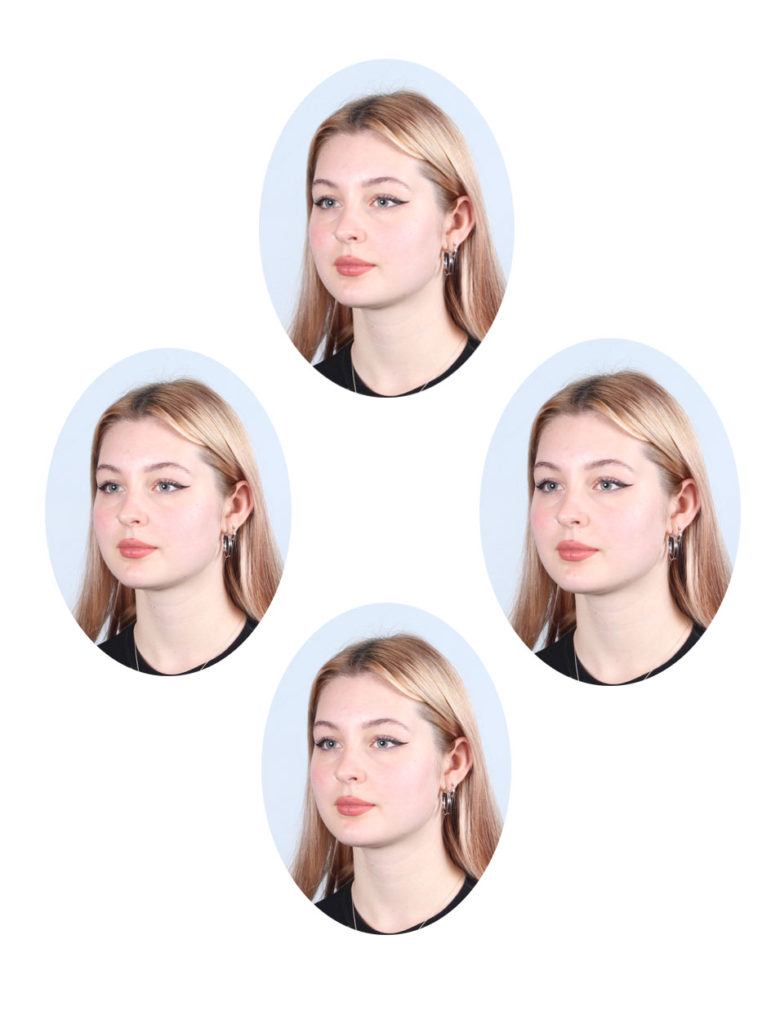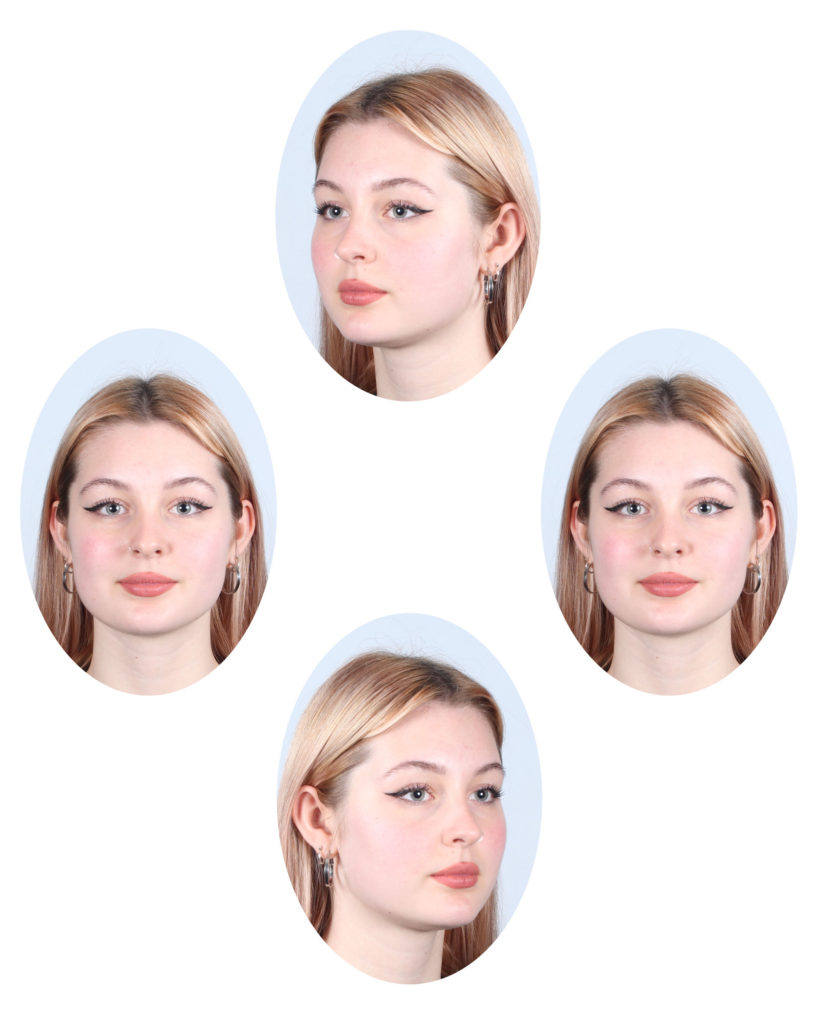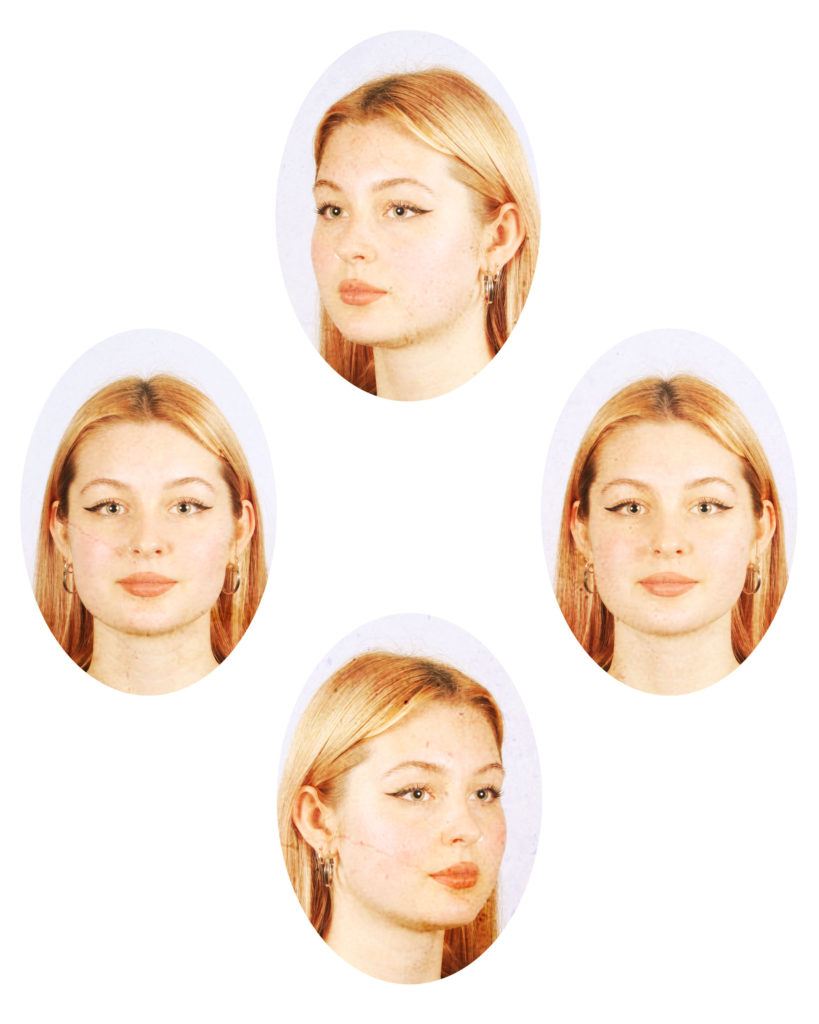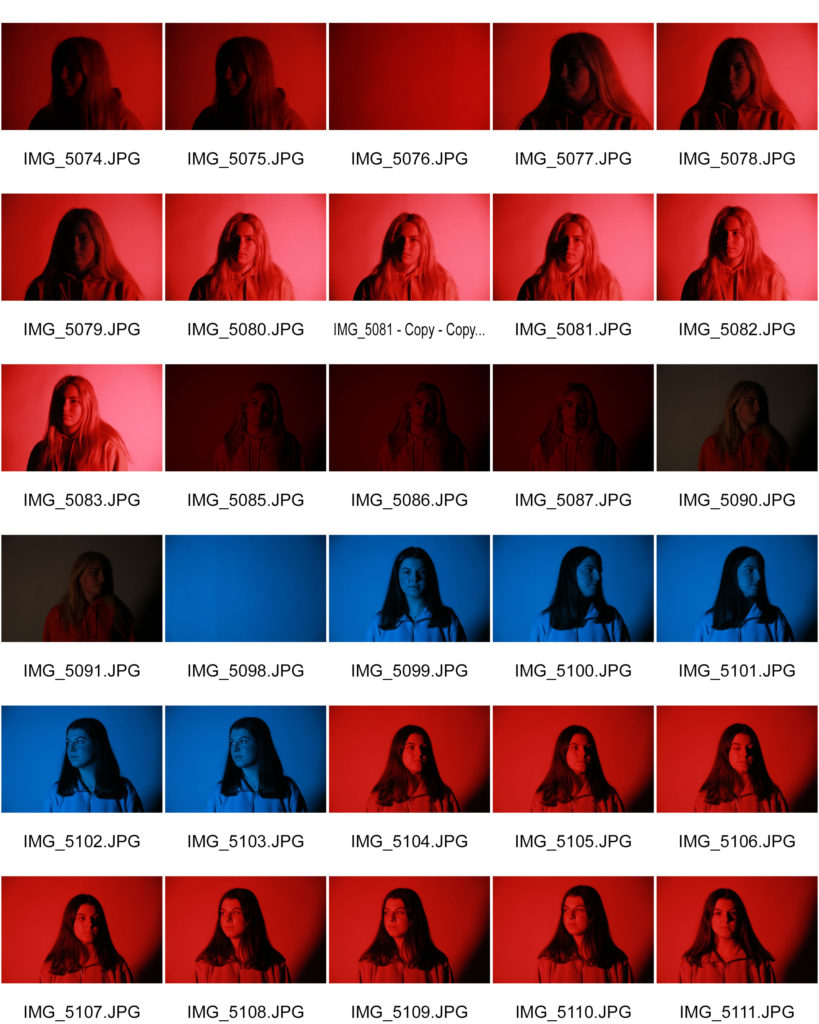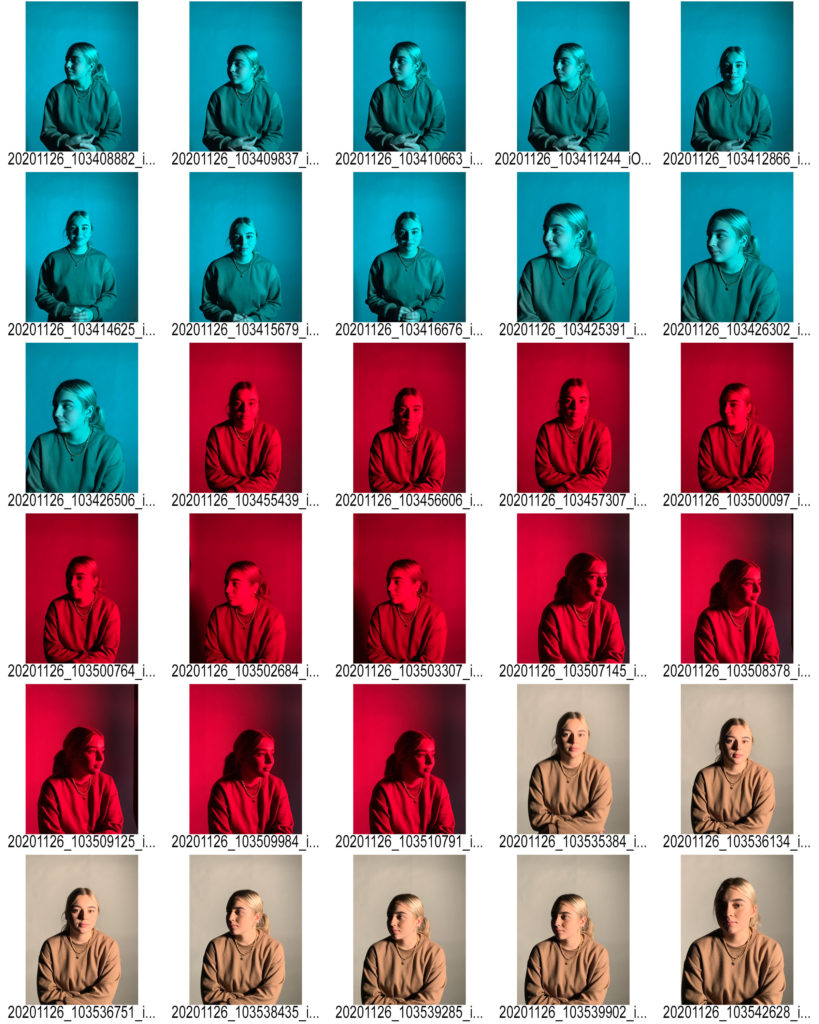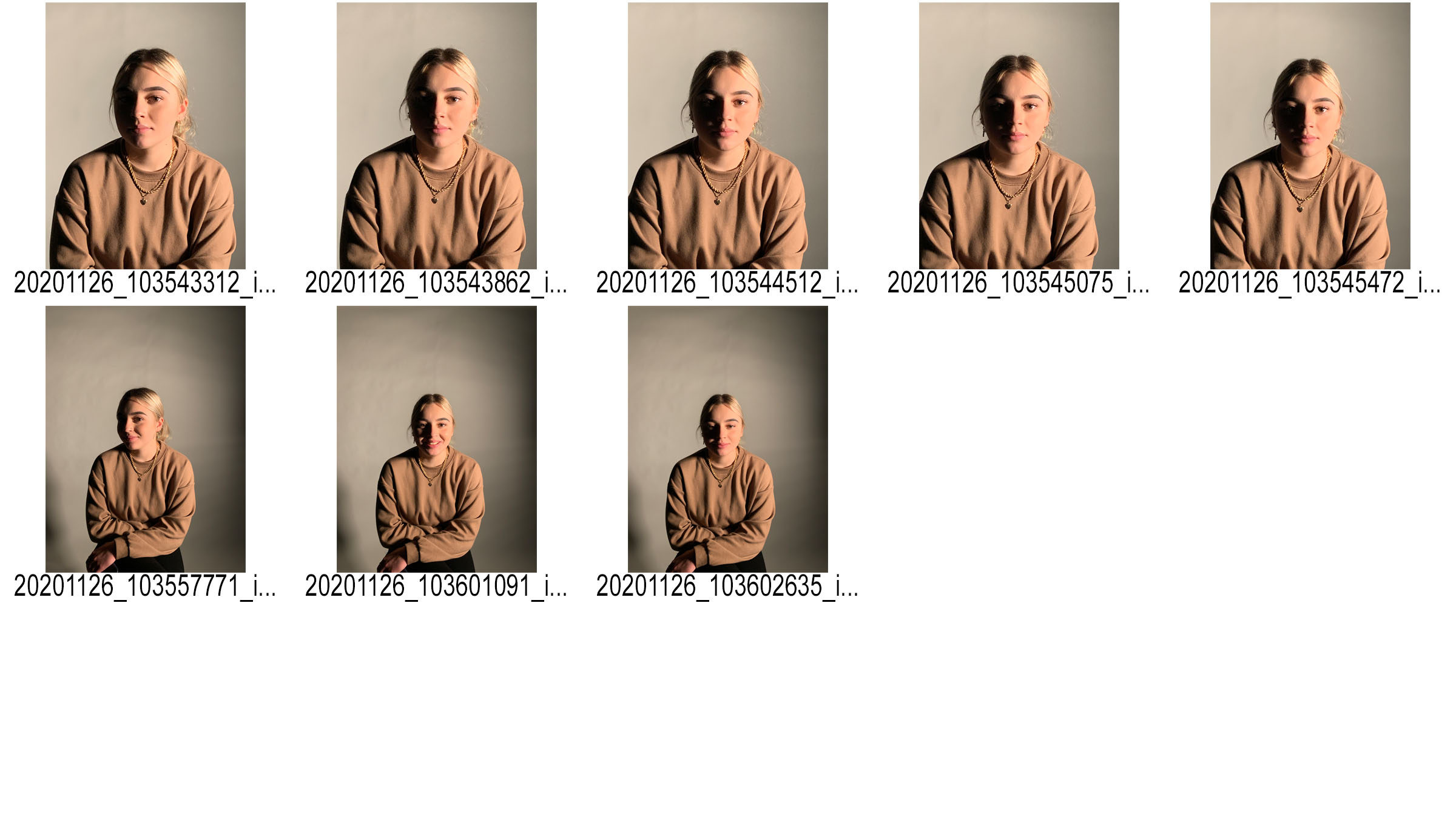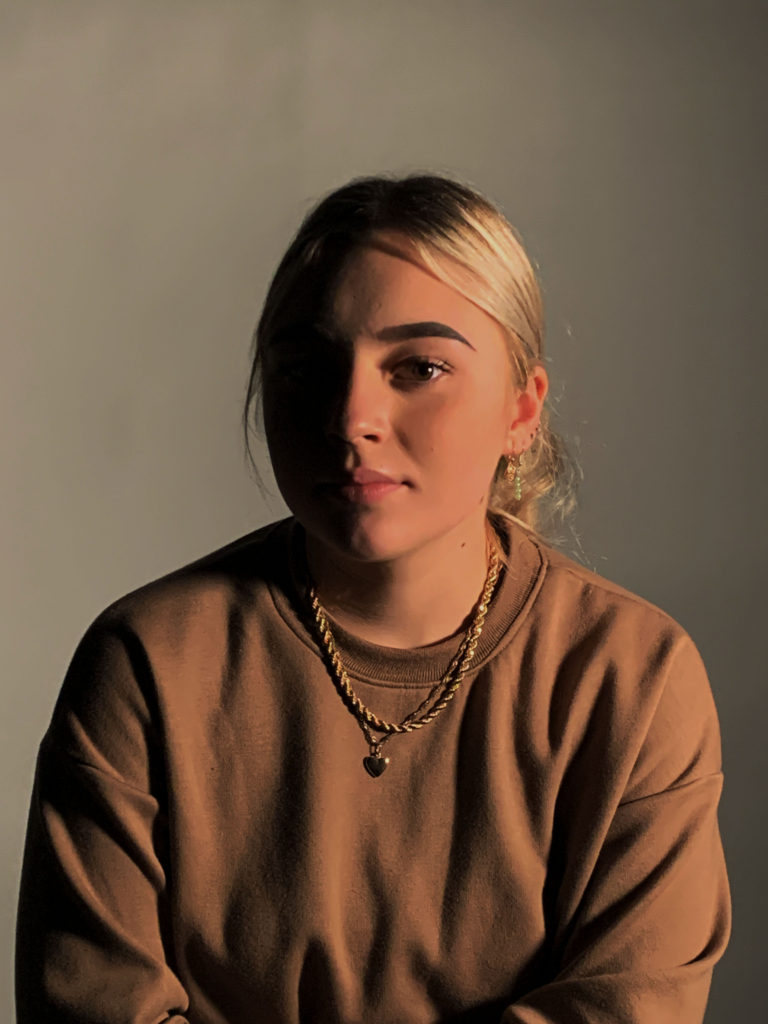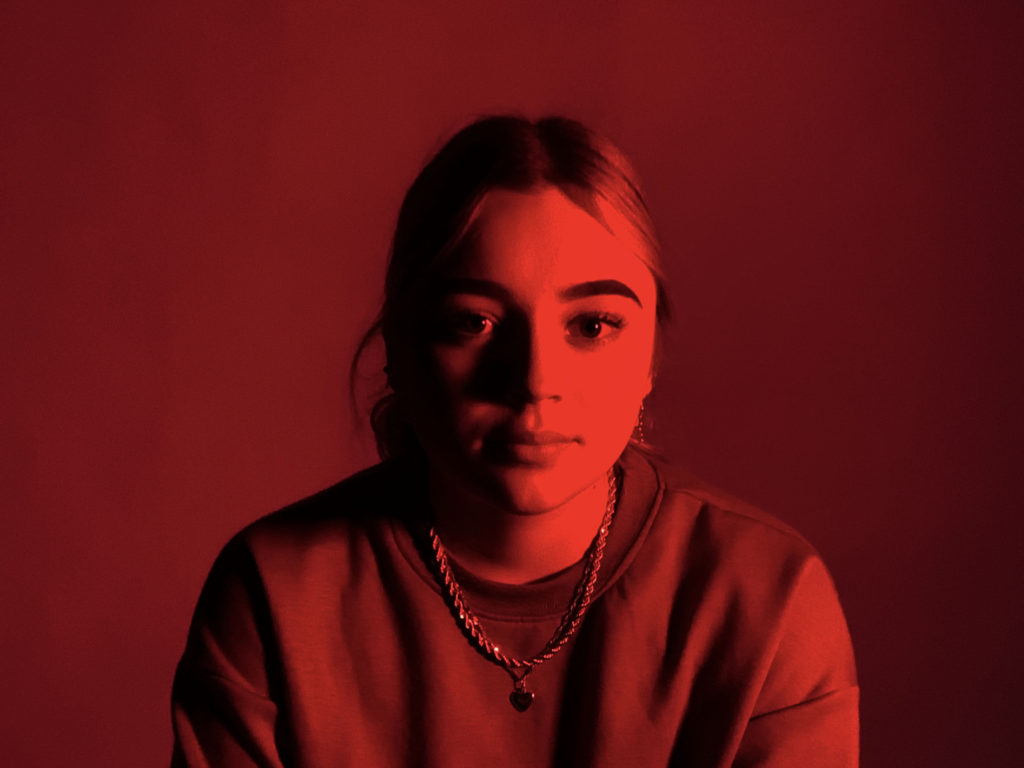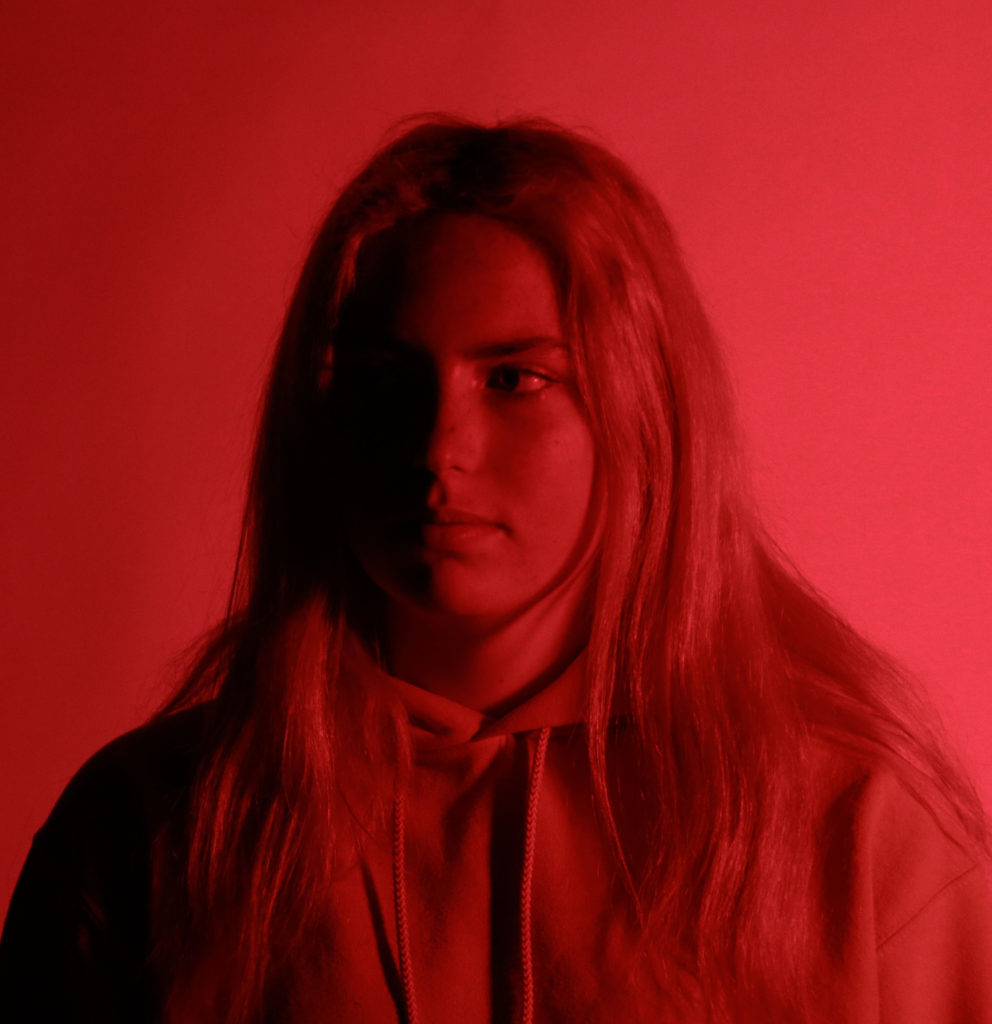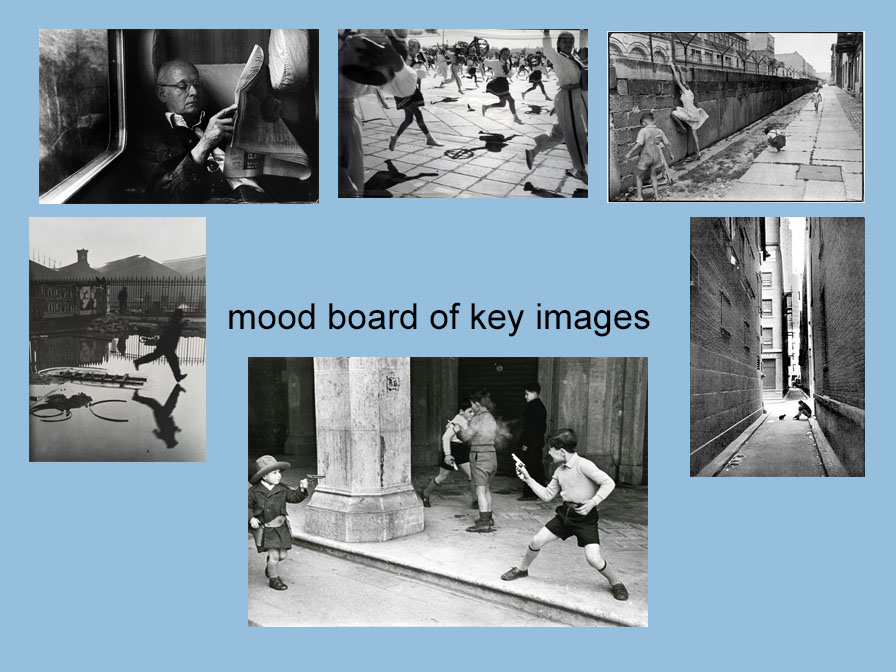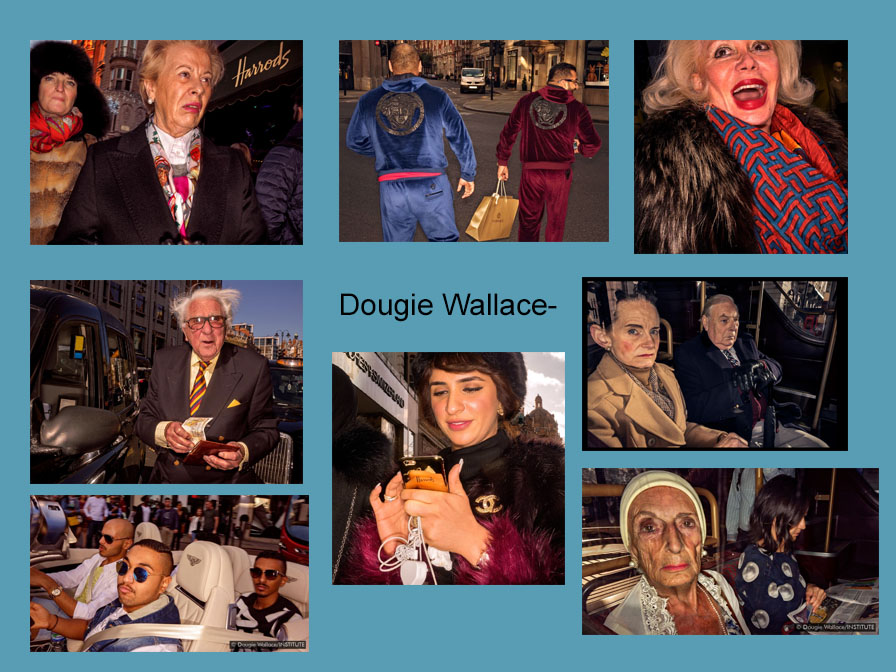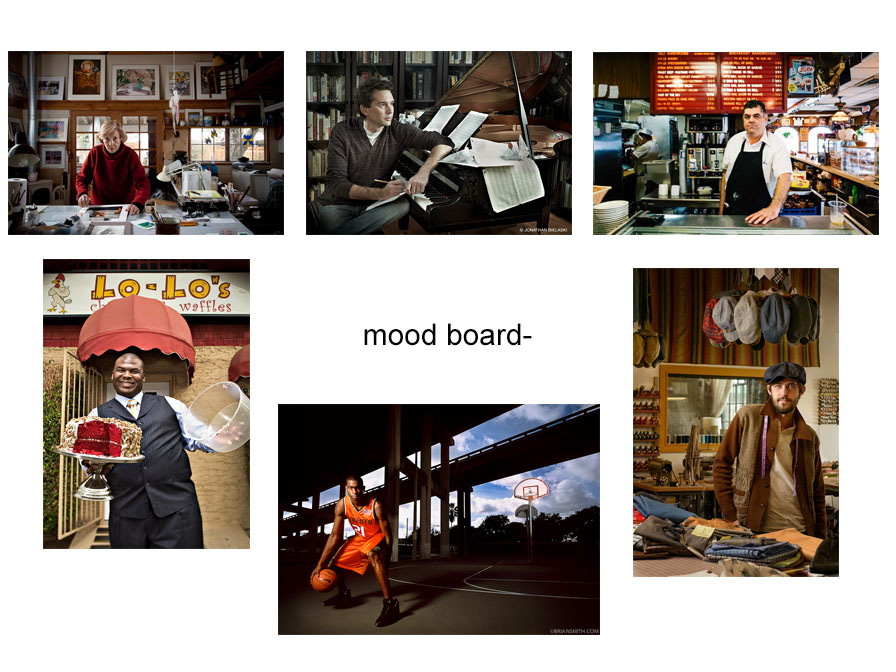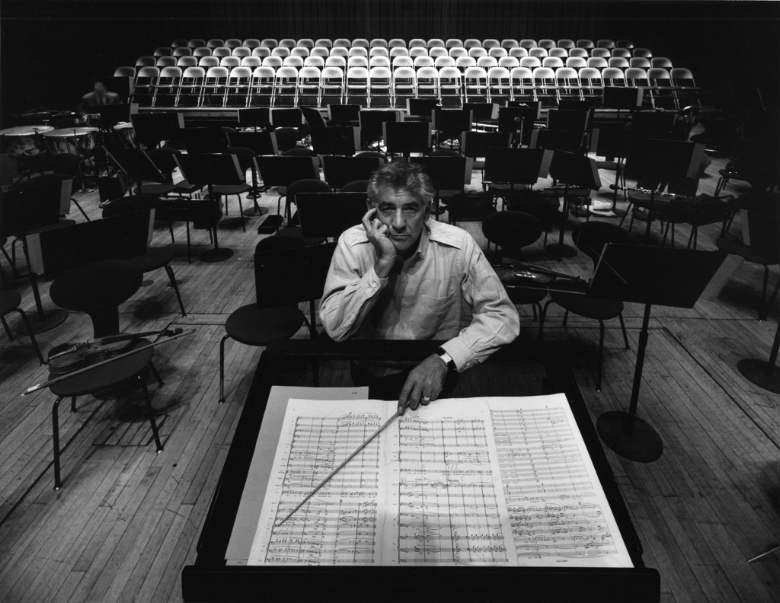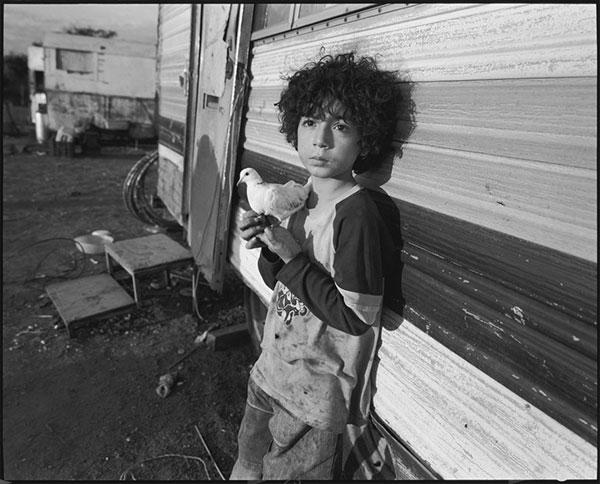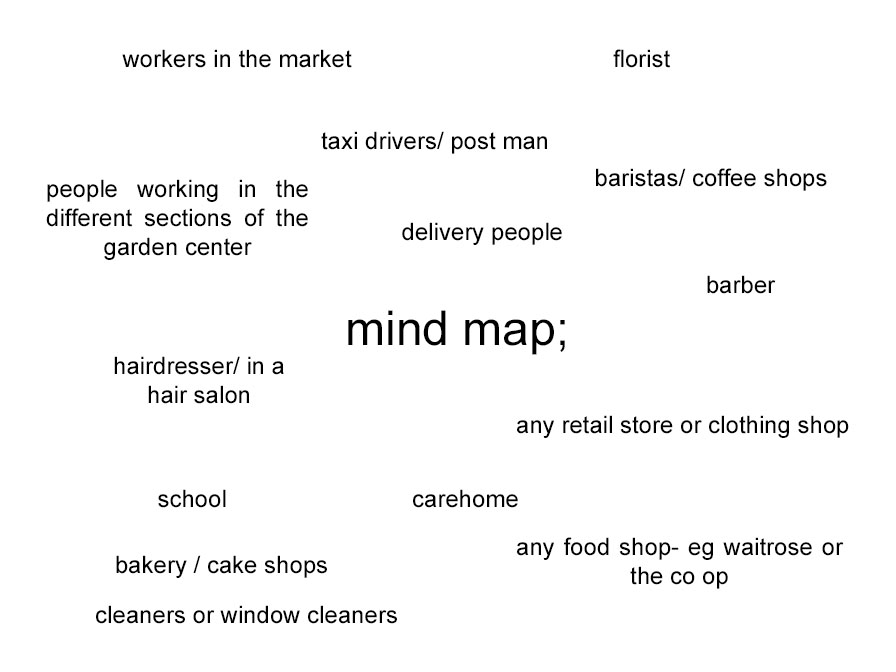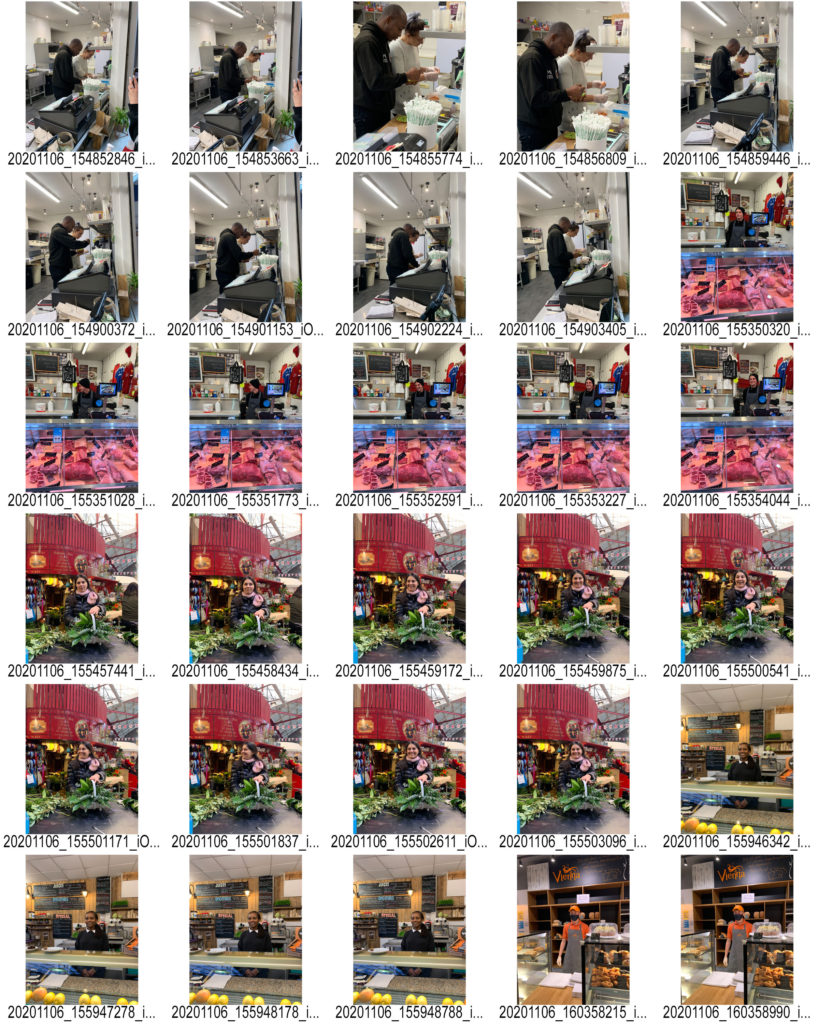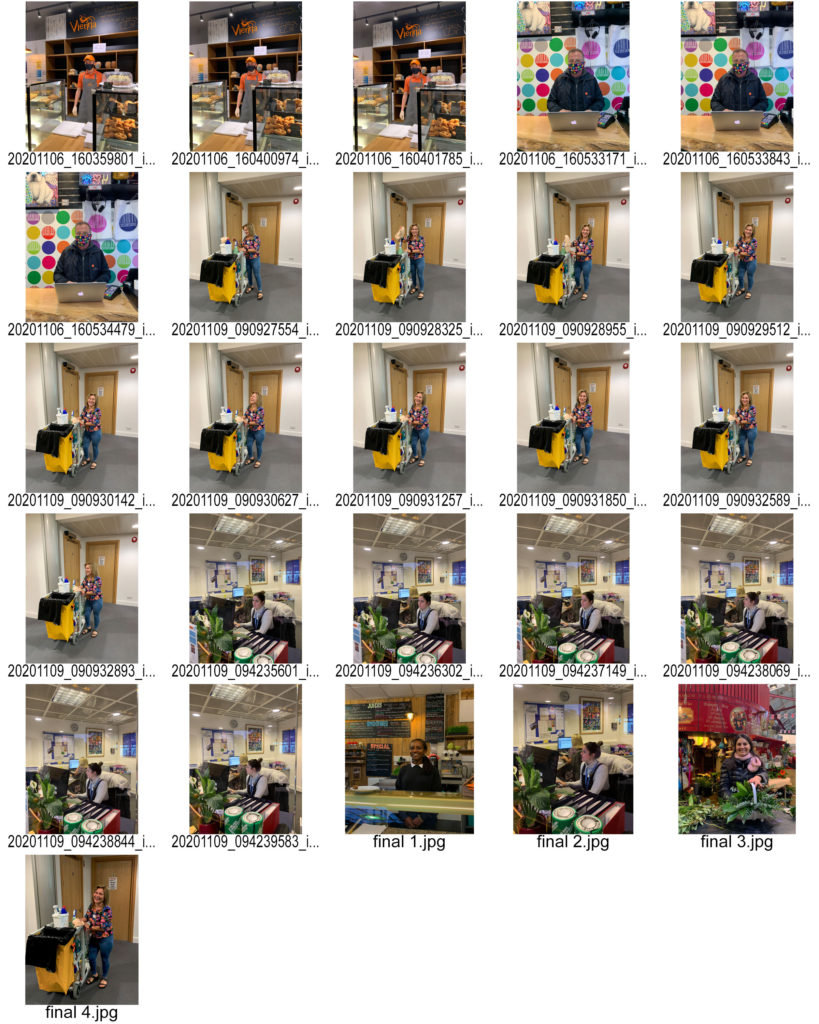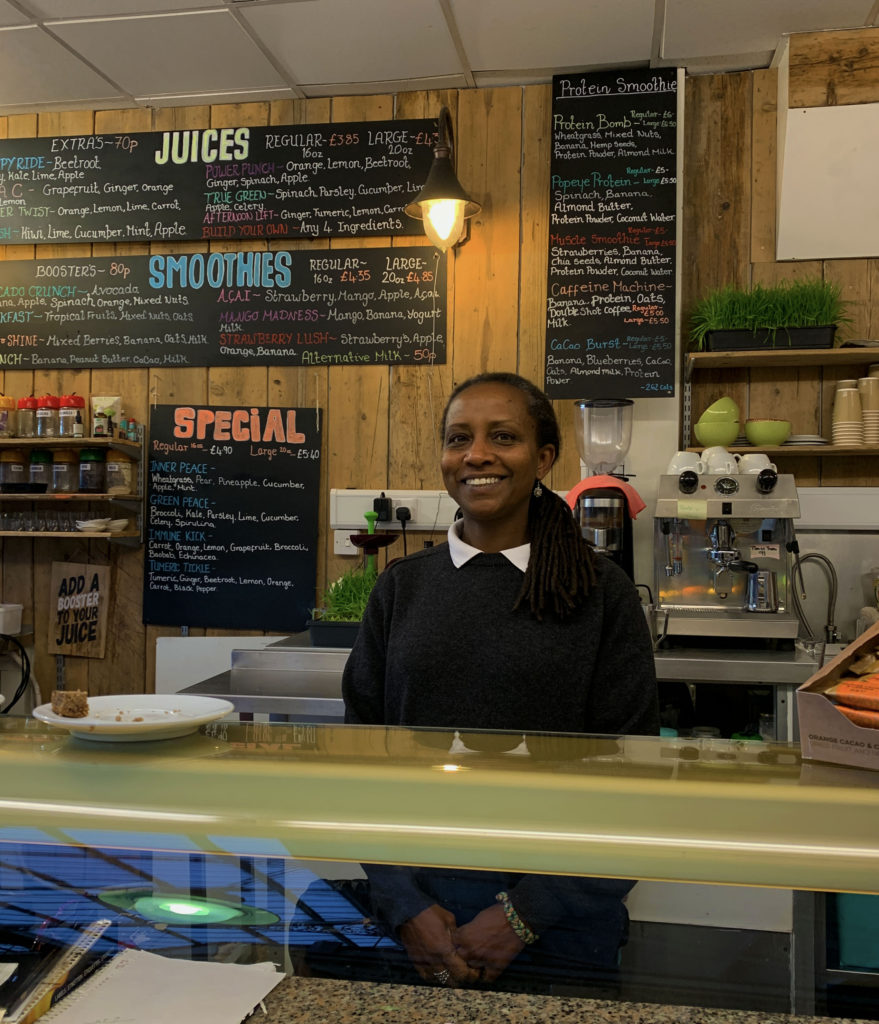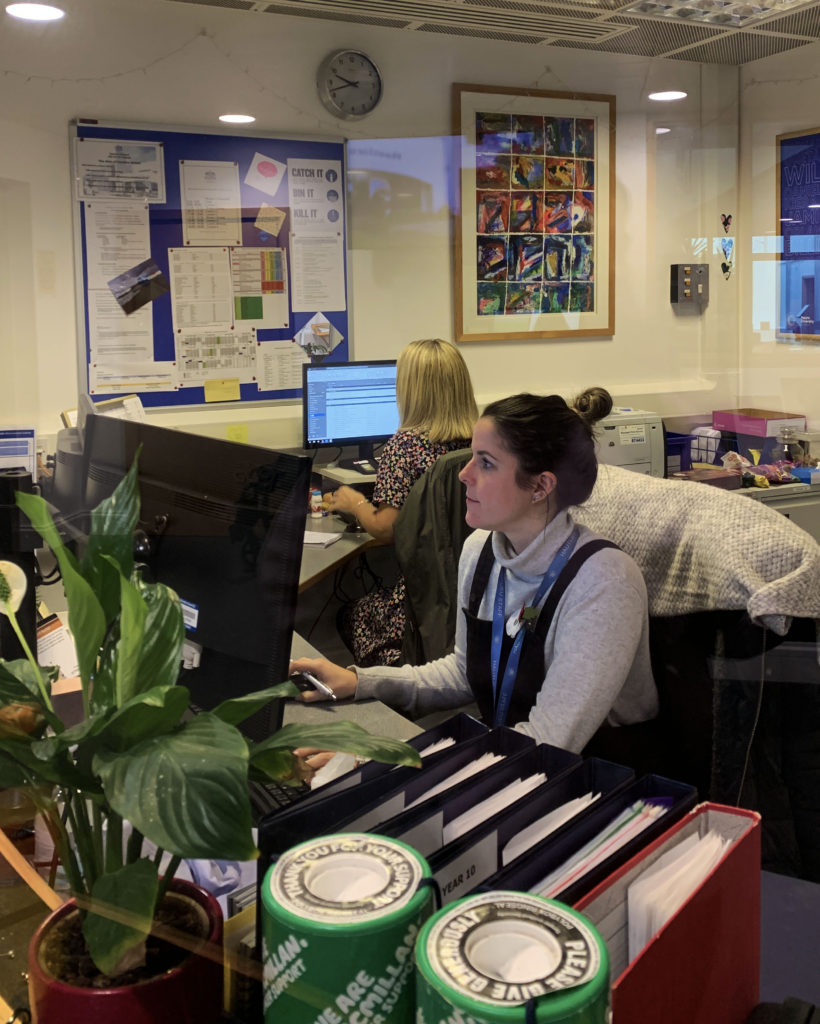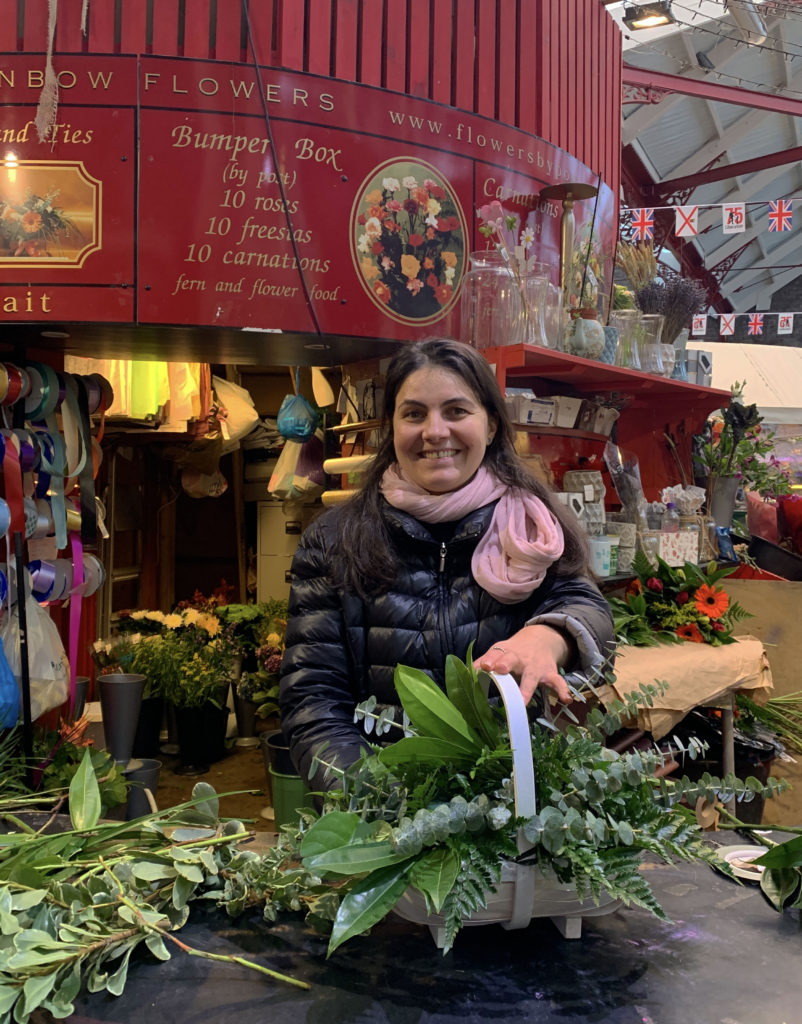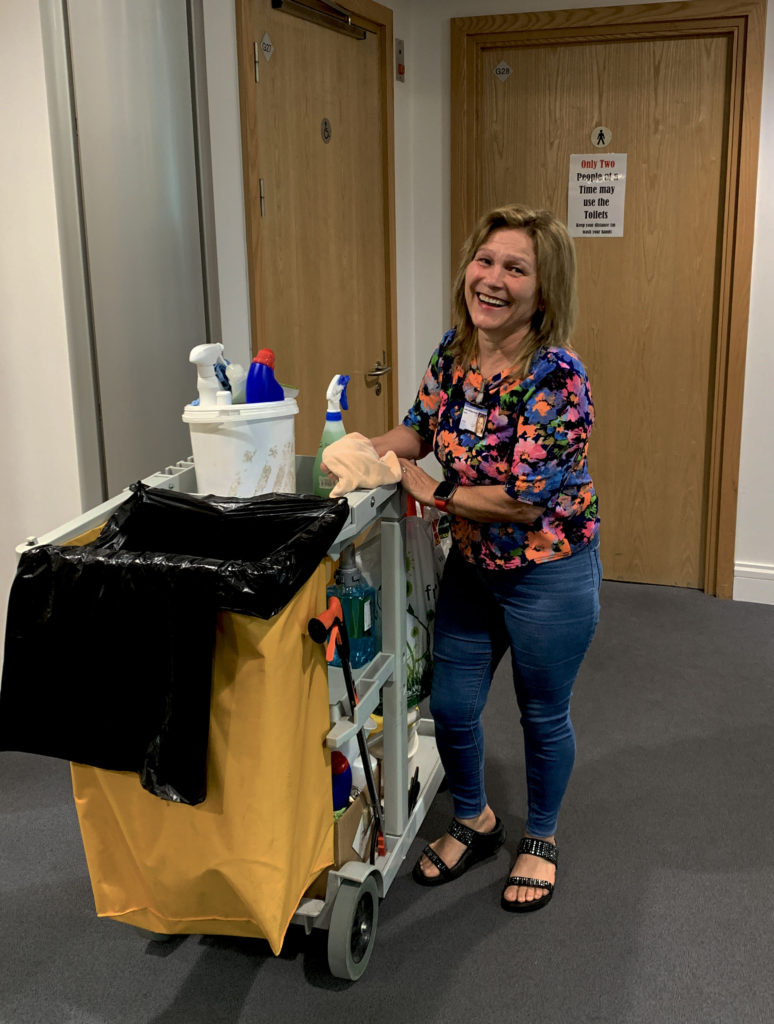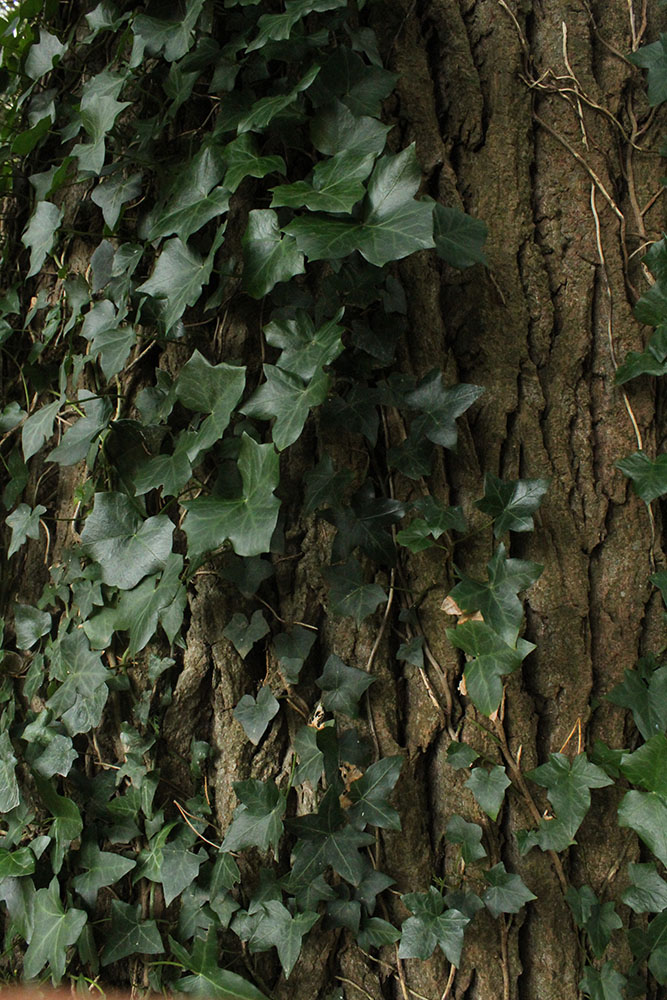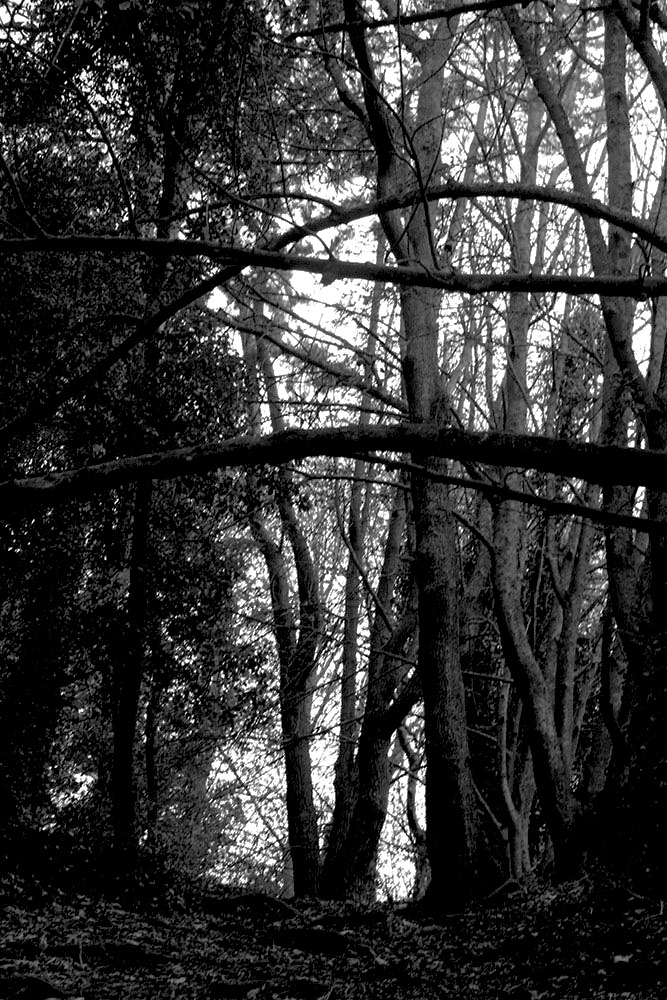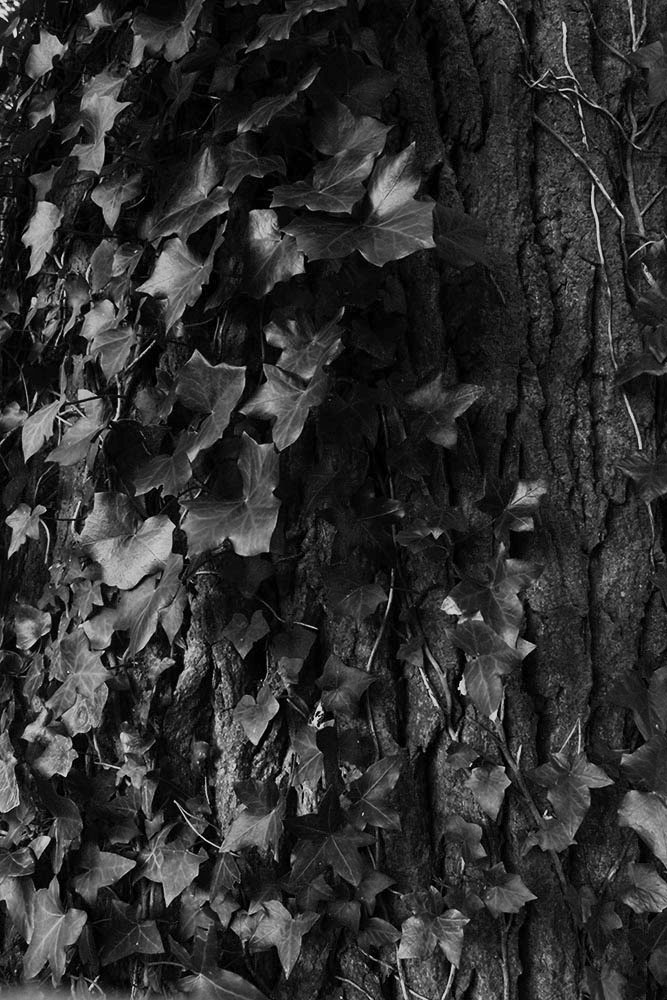
Plan- As I’m looking at the theme of lack of identity I wanted my first photo shoot to be simple head shots and photographs with a lot of editing. I want to cut out the face of the model and blur it out to introduce ‘lack of identity’ through that way. I’m going to photograph my friend in the studio with very light and bright lighting in the studio.
contact sheet–
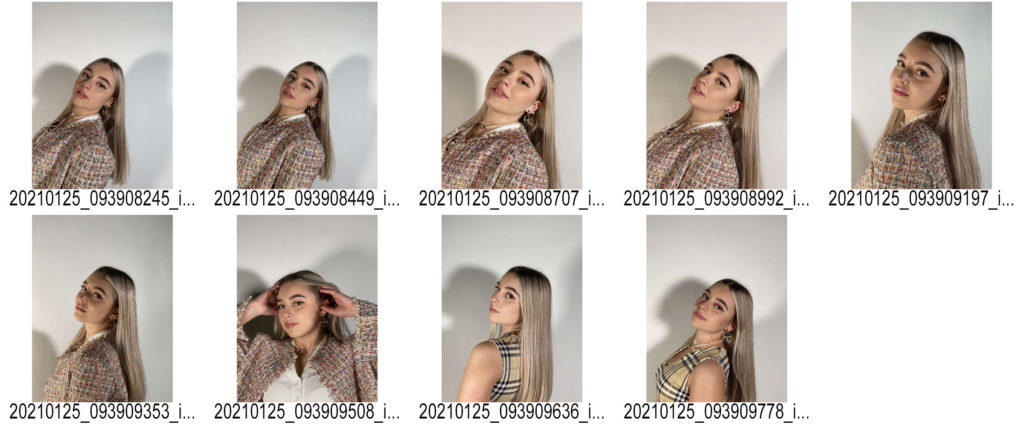
I picked out my best photos and wanted to edit them on Photoshop by turning them mostly black and white inspired by the artist I chose to study. I also overlayed my images with different watercolour backgrounds to disguise the face and I cut out each image and layered them on top of each other. I later edited the final edits and digitally drew a line over the eyes as it’s the way I wanted to present lack of identity which is the theme I chose.

different editing to help select my final image;
The first type of editing I wanted to try out is just simple drawing over the face by simply picking out my 3 favourite photos an draw red over the eyes with the ‘pencil tool’ to disguise the identity.
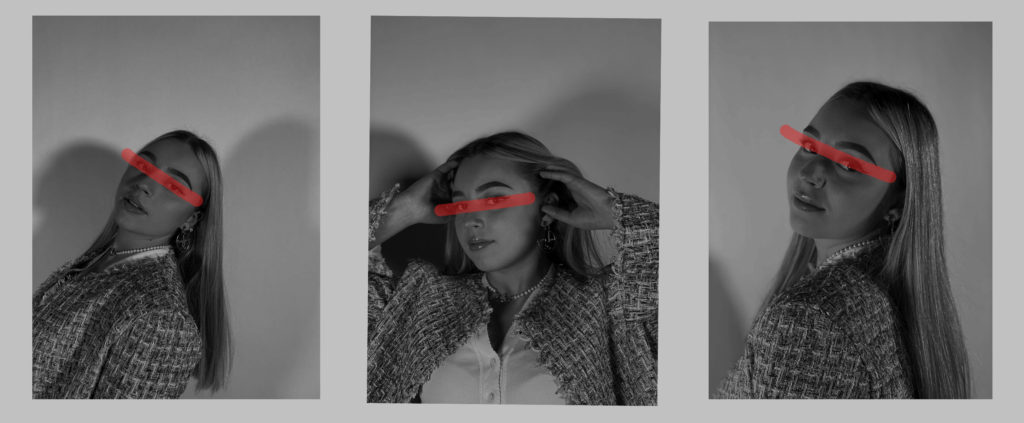
The second option for editing my images I wanted to try out is using the ‘liquify’ tool. I changed the brush to a small size and dragged the face face around till it created this swirl that looked right and completely changed her identity, if not erased it. I was happy with how my editing with this tool turned out because it got rid o her identity.
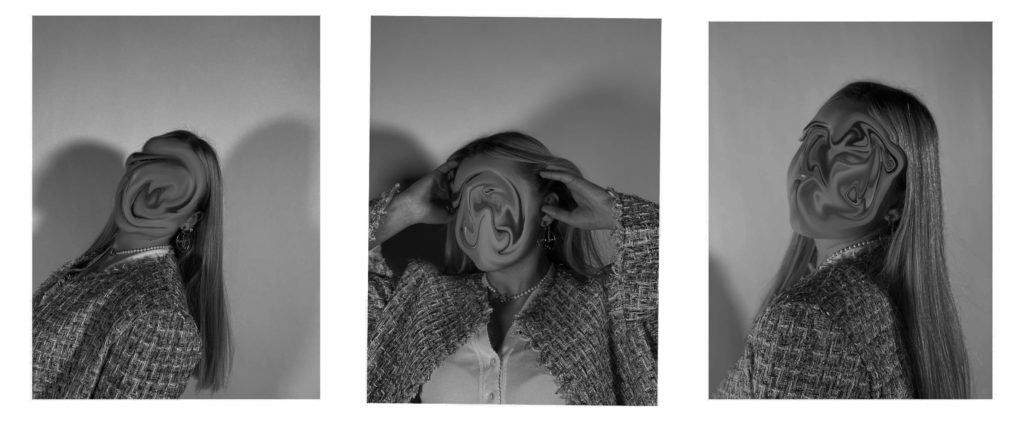
I wanted to combine the two for my last editing time. I used the ‘liquify’ tool again but this time I only selected and dragged her eyes which is similar to the first edit but dragging her eyes instead of drawing over them.
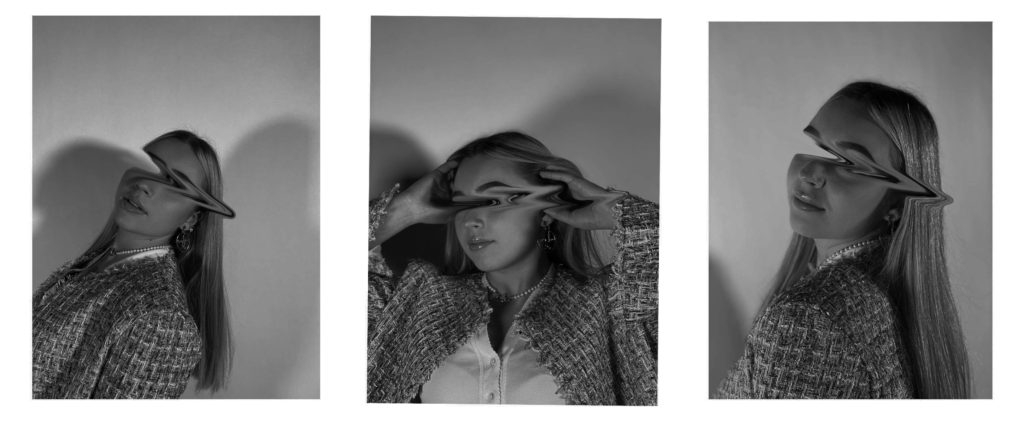
I used the quick selection tool and selected my friends face completely. I then used the ctrl+t option to select that part and I dragged it out of frame to create this lack of identity idea. I really like how these turned out as doing it digitally was quicker than printing my images out and cutting her face out. This makes the viewer think about what kind of face was there previously and why isn’t it there anymore. I wanted to present lack or loss of identity through loads of editing because as students it can be so hard to figure out who you are or who you want to be in the future as we’re still so young and have so much to yet experience and figure out about ourselves.
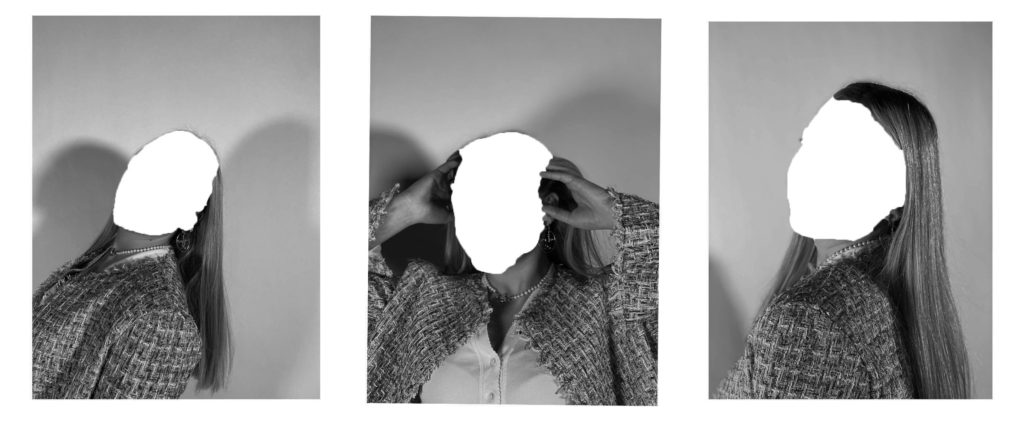
Final image and analysis+personal response
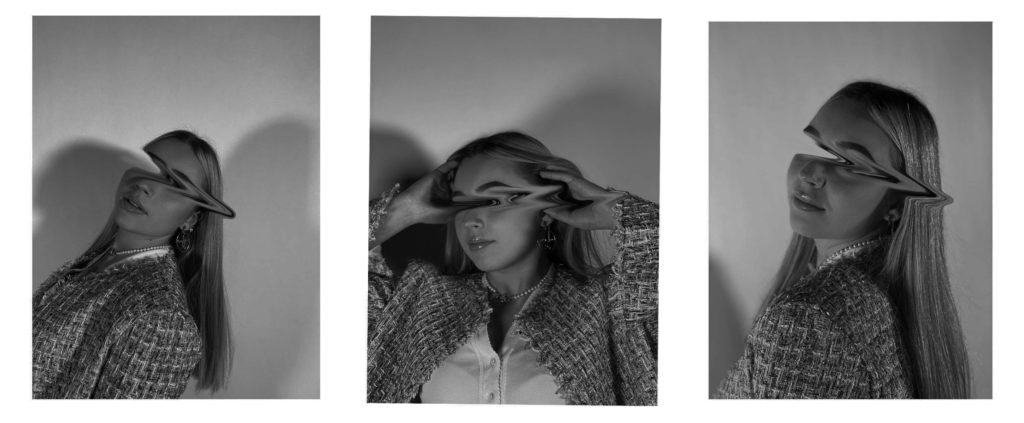
I used one-point lighting for these images and edited them in black and white as the photographer I chose (Jack Davison) to link my ideas to photographer their images in black and white. I feel like it makes it the photos look more dull and mysterious which fits perfectly with my idea of lack of identity. I tried to edit it in a way that shows different tones and shades of dark . My friends face is directly composted in the middle of the photo as I wanted her to be in the center and the main eye-catching subject. No distractions in the background helps with making her the only focus. I wanted to use 3 images lined next to each other as I think it gives you more to look at instead of just one image. By using 3 images I wanted to show that everyone has a view different personalities or even identities and it fits into my idea of lack of identity as people try to discover what they’re actually like and why we act different around others.
I like how I used the’ liquify tool’ because it links back to my chosen photographers work. I used more editing in my images whereas he uses more props such as hands and flowers to cover the face already. I only dragged the eyes out as I still wanted some of the face to be revealed, by erasing her eyes it took a big part of her identity away as you can’t really make out what she looks like anymore. I want the meaning behind it to be that sometimes we can be blind towards who we actually are and as young people or students we haven’t yet truly discovered our identity or who we yet will be.
I achieved what I wanted to do and I presented my idea of lack of identity very well through the way I edited my images. I think I linked my work back to my chosen photographer well, as Jack Davison also blurs his models faces out and cuts out parts of the faces into weird shapes. I cropped most of my images down so it’s just very focused on the face instead of the whole body and a background as it’s the style the photographer works with too.

